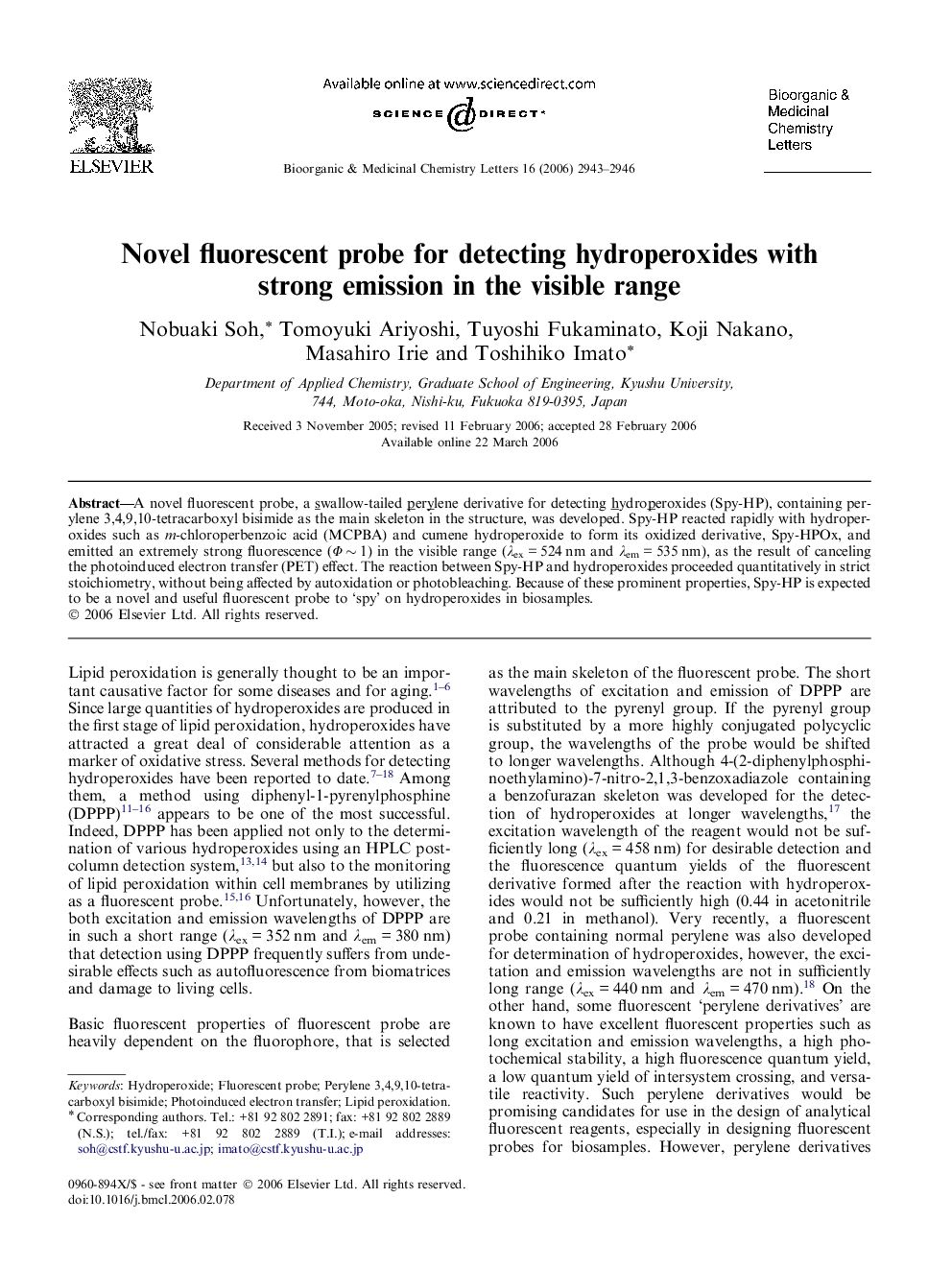| کد مقاله | کد نشریه | سال انتشار | مقاله انگلیسی | نسخه تمام متن |
|---|---|---|---|---|
| 1374393 | 981918 | 2006 | 4 صفحه PDF | دانلود رایگان |

A novel fluorescent probe, a swallow-tailed perylene derivative for detecting hydroperoxides (Spy-HP), containing perylene 3,4,9,10-tetracarboxyl bisimide as the main skeleton in the structure, was developed. Spy-HP reacted rapidly with hydroperoxides such as m-chloroperbenzoic acid (MCPBA) and cumene hydroperoxide to form its oxidized derivative, Spy-HPOx, and emitted an extremely strong fluorescence (Φ ∼ 1) in the visible range (λex = 524 nm and λem = 535 nm), as the result of canceling the photoinduced electron transfer (PET) effect. The reaction between Spy-HP and hydroperoxides proceeded quantitatively in strict stoichiometry, without being affected by autoxidation or photobleaching. Because of these prominent properties, Spy-HP is expected to be a novel and useful fluorescent probe to ‘spy’ on hydroperoxides in biosamples.
A novel fluorescent probe, a swallow-tailed perylene derivative for detecting hydroperoxides (Spy-HP), containing perylene 3,4,9,10-tetracarboxyl bisimide as the main skeleton in the structure, was developed. Spy-HP quantitatively reacted with hydroperoxides to form its oxidized derivative, Spy-HPOx, and emitted an extremely strong fluorescence (Φ ∼ 1) in visible range (λex = 524 nm and λem = 535 nm), as the result of cancelling the photoinduced electron transfer (PET) effect.Figure optionsDownload as PowerPoint slide
Journal: Bioorganic & Medicinal Chemistry Letters - Volume 16, Issue 11, 1 June 2006, Pages 2943–2946